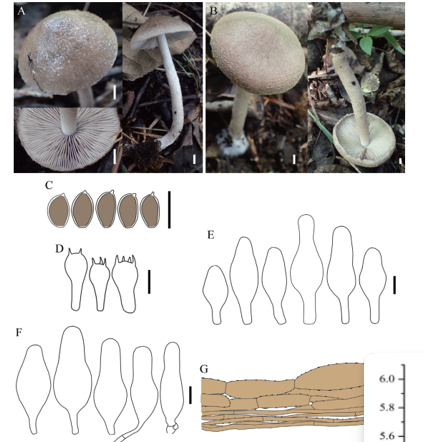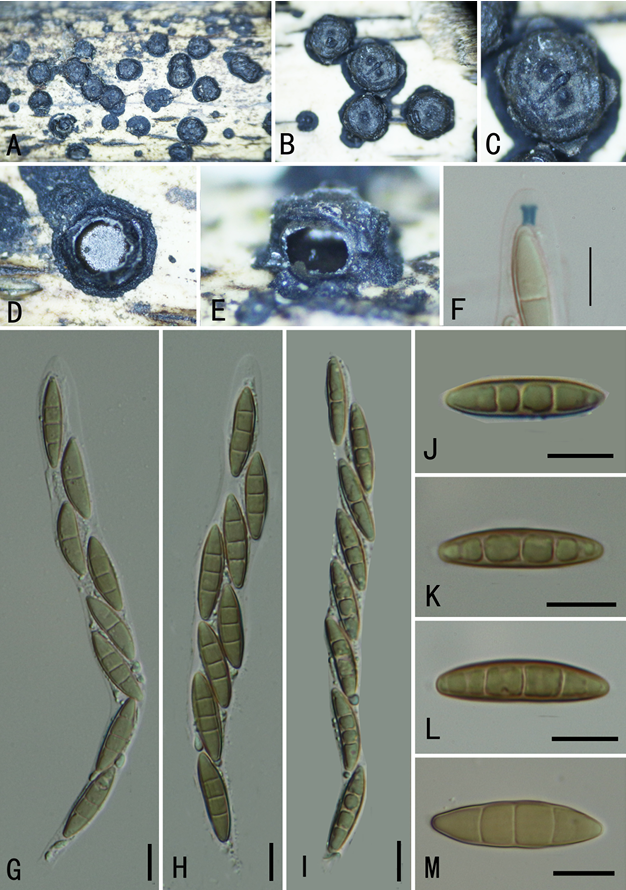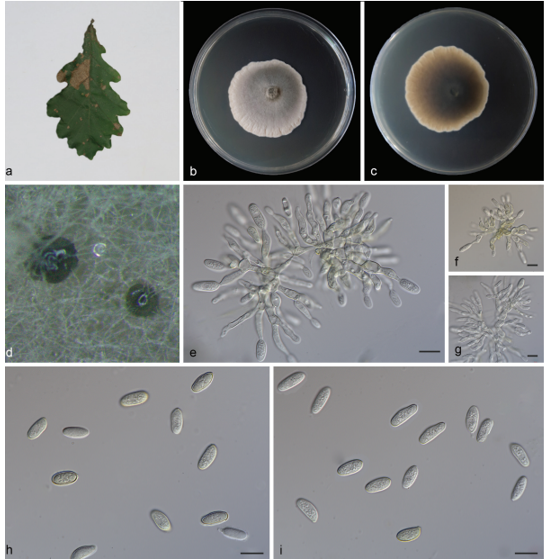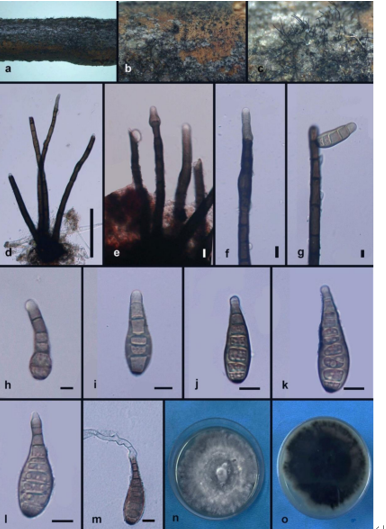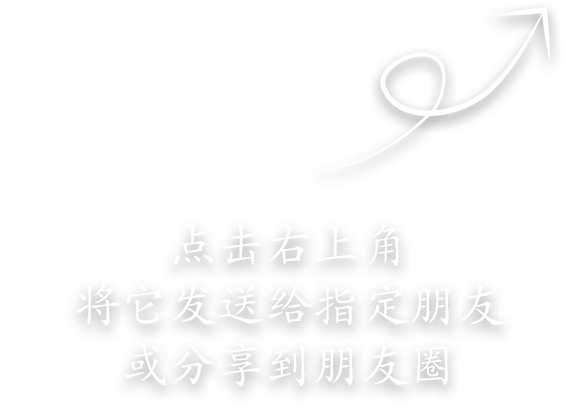Agaricus catenocystis R.L. Zhao & B. Cao, sp. nov. 2020
Fungal Names: FN570667
Holotype: CHINA. INNER MONGOLIA: Hulun Buir, Zhalantun (47°32′44″N, 121°13′22″E; 810 m asl), scattered on ground in coniferous forest, 27 Aug 2017, Zhilin Ling ZRL20170624 (holotype HMAS 279922).
Morphological description
Pileus 50–70 mm wide, broadly parabolic; surface dry, pure white. Lamellae free, up to 5–6 mm broad, crowded, with intercalated lamellulae, pink. Stipe 70–120 × 14–17 mm, cylindrical, slightly clavate, hollow, smooth, becoming yellowish when bruised. Annulus superior, membranous, white, smooth on the upper surface, floccose and brown at edge on the lower surface. Context white when exposed and remaining unchanged or becoming yellowish toward the stipe base. Odor of almond. KOH reaction yellow; Schäffer’s reaction reddish orange on pileus and stipe.
Basidiospores (6.5–)7–7.5(–8) × 4.5–5.5 μm [x¯= 7.2 × 5 μm, Q = 1.4–1.6, Qm = 1.5, n = 30], ellipsoid or ovoid, smooth, thick-walled, brown. Basidia
26.5–30 × 8–9 μm, 4-spored, clavate or slightly truncate at the apex, hyaline, smooth. Cheilocystidia 9–27.5 × 4.5–12 μm, hyaline, catenulate, consisting of obovoid or globose elements. Pileipellis a cutis of cylindrical hyphae, 2.5–9 μm wide, not or slightly constricted at septa, hyaline.
Habitat: on ground in coniferous (Pinus) forest.
Distribution: northeast China.
GenBank Accession: ITS MK617925; 28S MK617837; tef1 MK614432.
Notes: Agaricus catenocystis is represented by two specimens from Inner Mongolia and similar to A. arvensis. However, A. arvensis has a larger pileus and shorter stipe (Parra 2013; Kerrigan 2016).
Reference: Bin Cao , Mao-Qiang He , Zhi-Lin Ling et al. (2020): A revision of Agaricus section Arvenses with nine new species from China.
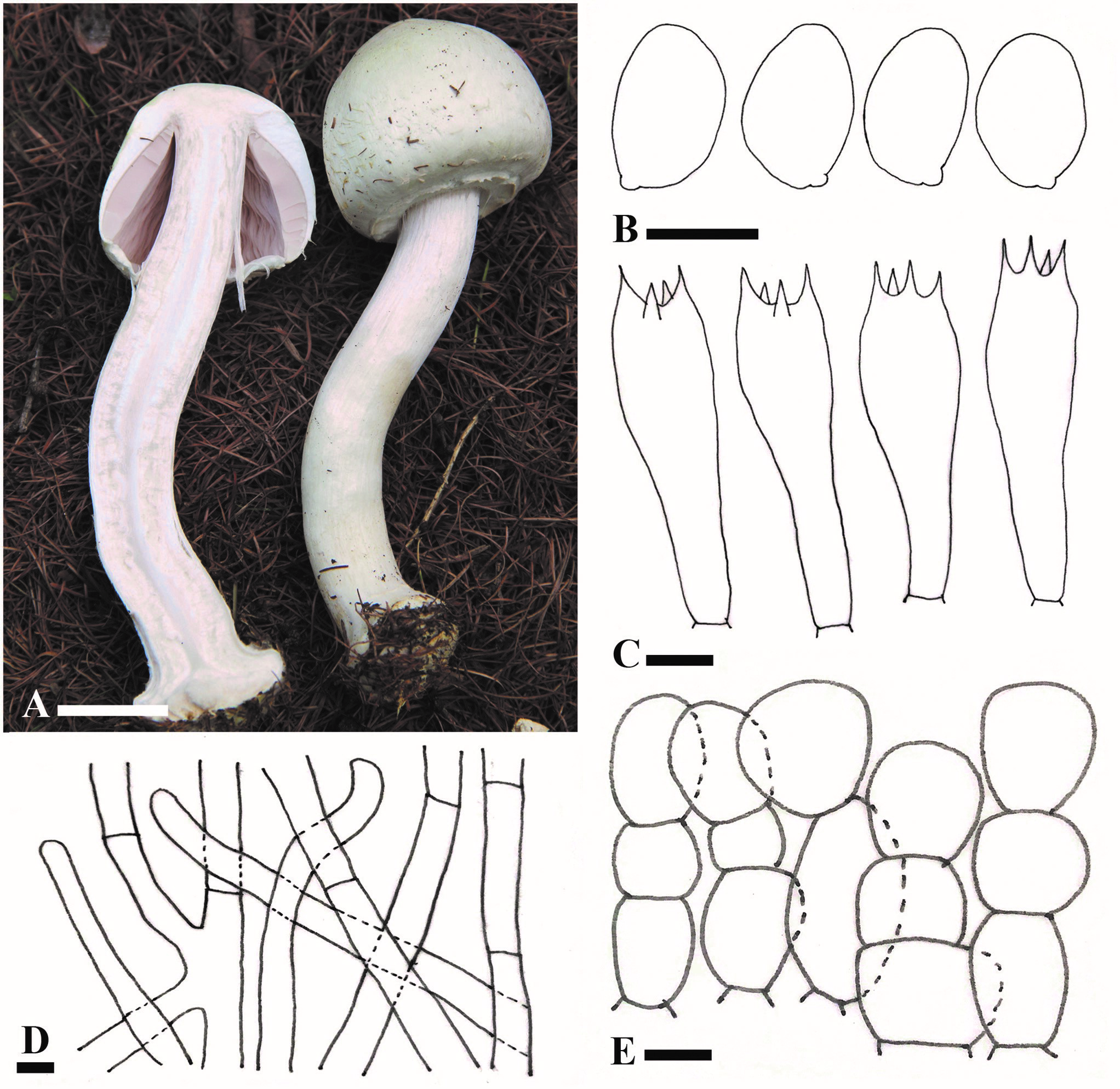
Agaricus catenocystis (ZRL20170624, holotype). A. Basidiomes. B. Basidiospores. C. Basidia. D. Pileipellis hyphae. E. Cheilocystidia. Bars: A = 2 cm; B–E = 5 μm.


